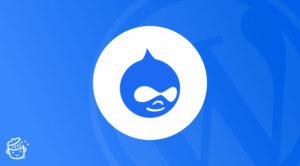By: Hannah Begley
Staying relevant and relatable to younger audiences can be daunting but has never been more important. With a rising emphasis on social media as a marketing tool, businesses need to tailor their social strategies and presence online to meet the changing interests of consumers. Social platforms have even begun to tailor their apps to accommodate businesses, adopting a shopping feature (think TikTok shop and their new “shop” feed, Instagram shopping, Facebook Marketplace, etc.).
Enter meme marketing: using popular internet humor and trends to connect with your target audience, humanizing your brand, reinforcing your messaging, product, or service, and making your business more relatable. This can be particularly effective with younger audiences, as they are less likely to have established brand loyalty in your industry yet, as they may be just starting out, and are more willing to be influenced.
Many businesses are hopping on the meme marketing bandwagon, and not just B2Cs—B2Bs are also realizing the power of memes and leveraging them in their social strategies and outreach to grow their presence. Even here at Zen, we’ve been integrating memes into our social media and are having some fun relaxing our presence online.
Still not convinced? Let me explain…
The Power of Meme Marketing
Meme marketing is a phenomenon that has taken the marketing world by storm. Memes are humorous, relatable, and easily shareable bits of internet culture that resonate particularly well with younger audiences. They’re often inside jokes, uniting people in their shared knowledge and interests. The word meme was first coined in 1976 by evolutionary biologist Richard Dawkins, who thought of memes as the cultural parallel to biological genes.
When businesses use meme marketing, they tap into this shared cultural experience, making their content instantly more relatable and authentic. Meme marketing is a powerful tool for businesses of all kinds, even B2Bs. By embracing internet culture, humor, and authenticity, you can connect with younger audiences and fortify your brand’s presence and personality.
Here are some of my favorite recent campaigns and how they leveraged meme marketing to take their efforts further than even they could’ve imagined:
McDonald’s and the Grimace Shake Trend
No one does nostalgia better than McDonald’s. I’d be lying if I said I, too, didn’t fall victim to the resurgence of boo buckets after their long hiatus since the mid-80s. For the past few years, they have been partnering with celebrities to develop meal partnerships (see: Cardi B and Offset couple’s meal, Travis Scott meal, BTS meal), and have been reaping the rewards. Earlier this summer, they launched their Grimace Birthday meal in honor of the legendary, complex, loveable purple blob, and the internet went crazy.
If you’re unfamiliar with the Grimace lore, let me give you the highlights: Grimace was first launched in 1971 as the newest resident of McDonaldland. He was born into McDonald’s royalty—his uncle, Uncle O’Grimacey, was the original Shamrock Shake mascot—so it’s safe to say that milkshakes are pretty personal to him…so much so that he adopted the nickname “Evil Grimace” and caught a reputation for stealing milkshakes and generally wreaking havoc.
McDonald’s soon realized that this was actually quite frightening to children and adults alike and rebranded him into his modern, plush, goggle-wearing self. But the internet is forever, and people weren’t so willing to forgive his past villainy. So, when the Grimace Birthday Meal launched this past June, it quickly garnered a lot of attention online. Soon, the Grimace Shake trend was born, where users would film themselves drinking the Grimace shake and dying in scenes that fueled my nightmares for months.
Let me state the obvious: this is what most would consider “bad PR.” An entire trend based on people dying when consuming your product? Not good. But, shockingly, McDonald’s social media manager leaned into it and embraced the “brilliant creat[ive], unfiltered, fun, peak absurdist gen z humor,” allowing Grimace to share his reaction to their nearly 5 million followers. This was met with widespread enthusiasm from McDonald’s fans and newbies alike, and the combination of curiosity and humor drove sales 11%, with the hashtag #grimaceshake gaining over 2.9 billion views on TikTok in the four short weeks it was available.
Zen Social Tip: McDonald’s leveraged the humor of the trend and leaned into it, as opposed to panicking and shying away from it, which only amplified its impact. They demonstrated that humor, playfulness, and nostalgia can be great tools for engaging with your audience. By embracing internet culture and encouraging user-generated content, they built a strong connection with their customers. The key takeaway here is that creativity and humor can go a long way in marketing, especially when it resonates with your audience’s sensibilities.
Duolingo and Duo the Owl
Duolingo gives Wendy’s a run for their money when it comes to the best casual, humorous, Gen-Z-esque social media presence. The language learning app has gained remarkable traction through its comedic short-form videos and tweets and general social outreach campaigns, which have effectively harnessed the power of internet humor and memes. Most of their content features Duo, the furry and bright green owl mascot for the brand, being his quirky and unhinged self.
Similar to Grimace, Duo was adorned with a creepy reputation when the brand launched Duolingo Push. The company themselves describe this absurd but hilarious idea the best: “We’re taking push notifications out of your phone and into the real world! Duo the Owl will literally show up to remind you to practice. Our new, in-person notifications can find you wherever you are. Ignore at your own risk.” No, this is not a joke.
Obviously, this immediately took the internet by storm and turned Duo into a quasi-pop-culture icon. The brand took their new status in stride and began making cheeky videos on TikTok that quickly earned them dedicated following and plenty of user-generated content. Their social media presence caused such a stir that TikTok themselves ran a case study on the phenomenon, reporting that the brand has received over 90 million views, expanded their follower base by 1,400%, and upped their click-through rate 39% above the app’s benchmark. They also became—and remain—the #1 education app, consistently rank in the top apps overall, and are up more than 62% in active users over the past year alone.
In my opinion, the most notable aspect of their social media strategy is that they never discuss their app from a sales perspective. Ever. And this is a hard and fast rule. They sometimes even work against themselves, and it still works out in their favor. At the peak of their downloading spike, one user commented, “Duolingo pls respond i spent over $100 on your app,” to which they responded “literally how it’s free.” Traditional? No. Effective? Absolutely. What they’re doing is undeniably working.
Their content is always lighthearted, funny, and welcomes all users—new and returning—to be in on the joke. They follow current trends, including the infamous Haley Bieber and Selena Gomez feud, which they compared to their own complicated, long-running rivalry with Google Translate. Duo also got a ticket to the Barbie pink carpet, attending as “Barbielingo,” complete with a blonde wig, hot pink two-piece set, and off-lilac cowgirl hat. (Completely unrelated, but don’t ask me what I’m being for Halloween this year…)
Maybe what I’m trying to say is that the secret to a great marketing campaign is an equally loved, feared, and unhinged mascot. I’m kidding…. (But, am I?)
Zen Social Tip: Duolingo proved that you don’t need a big budget to create viral content, and you don’t need to “sell” yourself to drive sales. By crafting humorous and shareable videos, they tapped into the spirit of the internet, driving engagement and growth without coming across as “salesy.” The key takeaway is that humor and relatability can be potent tools for building brand awareness and driving growth. A more casual approach to social media can strengthen the connection between your brand and your audience.
Going Viral Isn’t Always A Good Thing
While going viral is a cool achievement, the real value lies in building a genuine connection with your audience. While virality is tempting, it’s crucial to understand that it isn’t the be-all and end-all of marketing success. Creating a consistent and authentic connection with your audience is much more important and will lead to the conversions and sales you’re striving for.
Viral content is often short-lived, leading to a spike in visibility but not necessarily long-term brand loyalty. In contrast, consistently engaging your audience with authentic and meaningful content can lead to sustainable growth. Authenticity is the cornerstone of trust. When you consistently deliver content that aligns with your brand’s values and resonates with your audience, you build a foundation of loyalty and reliability. This can pay dividends in the long run, fostering strong brand-customer relationships.
Going viral may bring a fast-and-furious flood of attention, but it doesn’t guarantee meaningful engagement. Consistent, high-quality content has a better chance of sparking meaningful conversations, generating UGC, and creating a community around your brand. Virality often relies on fads that fade fast. In contrast, staying true to your brand’s identity and consistently engaging your audience ensures you’re not dependent on the whims of the internet. Ultimately, quality trumps quantity. A smaller, engaged audience that resonates with your brand and its message is more valuable than a large, passive one.
Practical Tips for Meme Marketing Success
Our team here at Zen Media understands the importance of meme marketing and uses it to help our clients achieve their goals. These are some of the best practices we follow daily to produce effective deliverables for our clients:
Be Relatable and Authentic
Memes resonate because they reflect the experiences and humor of everyday people, so your content needs should be relatable to your audience. Understand their culture, language, and preferences, and be authentic in your approach. Remember that your audience is VERY smart and can spot insincerity a mile away. Don’t force memes or trends that don’t align with your brand’s values.
Don’t Chase Virality
We’ve said it a million times and will say it again: As tempting as it is, going viral is not the ultimate metric of success. Consistent, quality content that engages your audience and builds a strong brand connection that will pay off more reliably in the long run. Virality can be fleeting, but a loyal and engaged audience is a long-term asset.
Don’t Take Yourself Too Seriously
Humor is a universal language. Leveraging humor in your marketing campaigns can help you connect with your audience on a more personal, relatable, and accessible level. Remember, laughter can go a long way in building a strong emotional connection (and is scientifically proven to foster social bonding).
Meme marketing can play a significant role in engaging your audience and enhancing brand visibility. However, it should be a part of a broader strategy that prioritizes authenticity, consistency, and meaningful connections. Remember, while going viral is a fantastic achievement, the real value lies in building a genuine connection with your audience.
Need help jumpstarting your new marketing strategy? Let’s talk.




